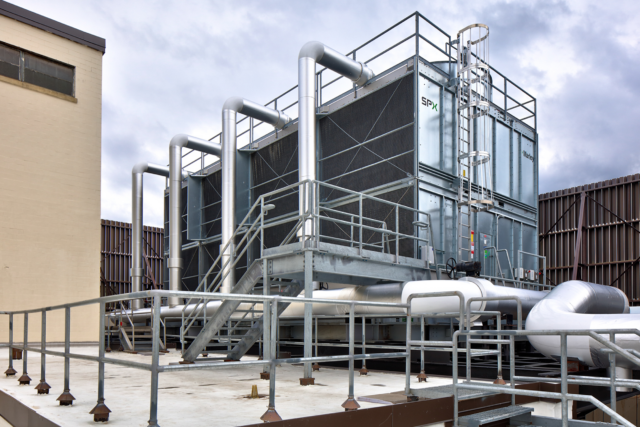Is it Time to Update Your Municipal Noise Ordinance?

Requiring a noise impact assessment can reduce future headaches.
In our experience, municipal codes throughout the United States often contain antiquated noise ordinances that do not adequately protect residents from adverse environmental impacts. Vaguely written ordinances also offer scant guidance for developers and local zoning boards, with regard to defining and applying proper noise standards during the review process.
A possible adverse noise impact would be a facility that requires the operation of large mechanical equipment… which runs all night long during many months of the year. This noise may be annoying to nearby residents, but a search of the local code might reveal generic legalese (circa 1950) such as, “It shall be unlawful to willfully make or continue, or cause to be made or continued, any loud, unnecessary, unreasonable or unusual noise, or to permit any other so to do, which disturbs the peace or quiet, or which causes discomfort or annoyance to any reasonable person of normal sensitiveness…”
This kind of language can be found in local codes throughout the country. Ordinances of this nature are largely subjective and are often useless in the interest of protecting the community. Furthermore, such vague codes do not help the zoning process, that being the earnest back-and-forth efforts between development entities and local boards. Nobody wins in this situation. Confusion reigns and arguments begin.
This is a common story: a town welcomes the economic stimulus afforded by a new project, but the facility makes noise by design. The municipality must then strike a balance between economic development and an obligation to protect the community from annoyance. Unfortunately, local boards often do not know what constitutes “unnecessary, unreasonable or unusual noise”. Even if the ordinance cites a quantitative noise limit, such as “50 dBA”, the language may not describe a methodology for determining compliance. The ordinance language may not speak to the temporal nature of the sound, the character of the sound, or the community’s general attitude towards the project. This can leave the development entity with a nebulous design target, and uncertainty when estimating costs for noise control engineering. Worse, some codes can be interpreted so that even a quantitative standard does not adequately protect residents.
Scientists and engineers have been addressing the psychological and societal impacts of community noise exposure for decades. Research has confirmed causality between excessive environmental noise and empirical evidence of negative human reaction (annoyance). The 1960s and 1970s were a “golden age” for research designed to study noise-related community annoyance, and much of that work is still cited today. Those efforts subsequently informed public policy at the federal and state levels. Though many of the details are far from settled, the scientific community can agree upon fundamental standards and thresholds designed to minimize community response to noise.
Unfortunately, there is disconnect between federal, state, and municipal governments when it comes to promulgation of standards for predicting community response to noise. This problem is nothing new to consultants working in the field. Though the federal government (EPA) promoted serious research into the effects of environmental noise, the recommendations of the scientific community were not always adequately integrated into policy or law.
The issue becomes even more complicated at the state and local level. Though states like New York have highly qualified acoustical engineers on staff, their primary role is to review large-scale siting projects like wind farms or power plants. For smaller scale development projects, interpretation of local noise ordinances is not often the purview of state reviewers.
For any project that could generate noise, it is advisable for the municipality to require some kind of noise impact assessment. An assessment compares predictive modeling results (future noise levels) against existing conditions. This would include any project which utilizes mechanical equipment or permanent music amplification systems, or which may result in large crowds or changes in vehicular traffic. Such studies are typically paid for by the developer. However, the municipality will often benefit from having a third-party acoustical consultant or noise control engineer review the impact assessment report.
LaBella staff have extensive experience working with federal, state, and local entities on a wide range of projects where noise impact is critical. LaBella can review or perform community noise impact studies. We can also offer guidance when ordinances are not concise, or when help is needed to resolve complex use and zoning decisions related to noise.